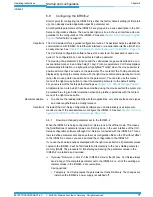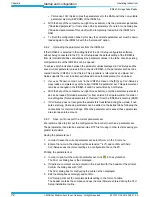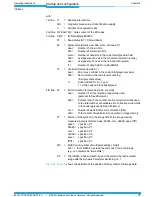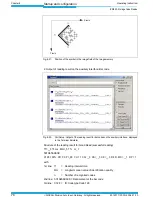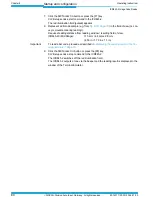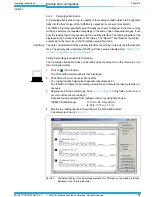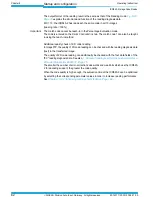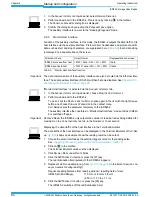
Operating Instructions
Chapter 6
ICR845-2
Startup and configuration
8012377/0000/2008-01-30
©
SICK AG · Division Auto Ident · Germany · All rights reserved
85
CLV-Setup outputs the reading result in the Terminal Emulator.
Example: "SICK AG Auto Ident ICR 840".
To perform reading of a bar code see
„Displaying the reading result in the Terminal Emula-
tor“
,
Page 75
.
Important
Large amounts of data received at high speeds via the host interface and high data transfer
rates may cause the flow of host interface traffic to no longer be completely displayed on
the auxiliary interface (display " …").
This is caused by the slower data transfer speed of the auxiliary interface (9,600 bd).
In the default setting, the ICR845-2 sends the following in the data output string of the host
interface:
Good Read: data contents of the code
No Read: NOREAD string
The "Header" and "Terminator" blocks are empty, the code contents are not separated by
reading diagnosis data and/or constants.
Tip
The structure of the data output string of the host interface can be configured via the
D
ATA
S
TRINGS
tab:
Up to 10 elements, consisting of constants (letters, digits, control characters) and/or read-
ing diagnosis data, can be entered in the "Header", "Reading data" and "Terminator" blocks.
1.
Choose the D
ATA
S
TRINGS
tab.
2.
Click the H
EADER
field.
The dialog window E
DIT
P
ARAMETER
: TFH is displayed.
3.
Click the desired constants or placeholders for the reading diagnosis data.
The selected elements appear in the input field at the top the dialog box in the order in
which they were selected.
4.
Confirm the dialog box with "OK".
The selected elements are displayed in the H
EADER
field.
Fig. 6-25:
CLV-Setup: Output of the reading result of the host interface on the auxiliary interface,
displayed in the Terminal Emulator (in this case: O = Output)

